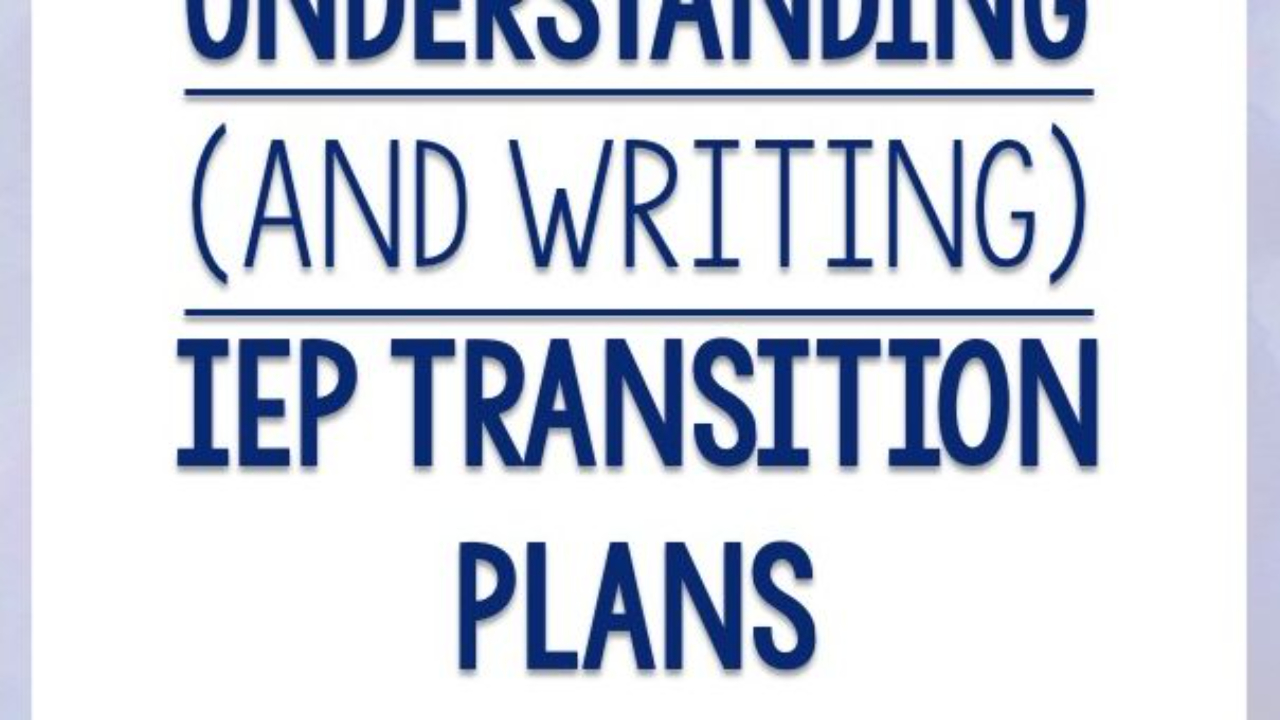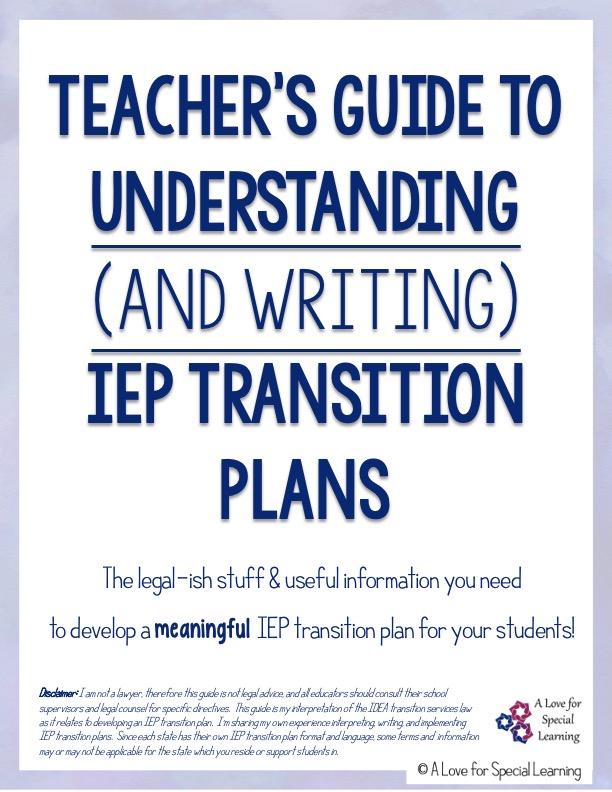

You’ve likely written an IEP Transition plan (or two or two hundred).
Just to get everyone on the same page, I’ll give a quick overview of a Transition IEP.
A Transition Plan is one small but mighty section of the whole student IEP. This part of the IEP articulates what the student wants their life to look like after they leave school and what services and supports, both now and in the future, will help them achieve their dreams.
Outside of annual goals for academics, the IEP transition goals prepare high school and transition age young adults for the real world. This may look like direct instruction to learn high-frequency independent living skills, community participation in vocational training to address vocational skills, increased awareness of available job training program opportunities, and/or a postsecondary education plan to help achieve all future careers of interest. Using transition assessments like these is the first step in identifying student’s interests as this feedback helps to directly inform transition IEP goals and services.
Lastly, some information from the transition plan will be included in the Summary of Performance (or SOP), which is the last document a graduating or exiting student will receive. A Summary of Performance summarizes and wraps up alllllll the information in the student’s IEP into just a few pages.
Give out transition assessments >>> Interpret and summarize feedback >>> Write Ind Living, Education, Training, and Employment future plans >>> Identify current and future supports to help achieve those plans
Now, that may sound pretty straight forward, however, we know that isn’t really the case. A transition plan is intended to be highly individualized, as its purpose is to create a real picture of the student’s future and the steps the whole team will take to help them achieve those goals.
A student’s transition plan is a summary of the vision the student has for their adult life and outlines transition services for their post-secondary education or training plan, employment, and independent living. Every state’s IEP transition plan layout looks slightly different, but they all have the same main criteria.
As an IEP team member, special education teacher and/or related services provider, you are tasked with identifying your students' long-term desires or outcomes. Both a student’s needs and interests are taken into consideration when goal setting in the areas of independent living, education and/or training, and employment.
An IEP transition plan is the groundwork with which IEP goals are built, especially as the student inches closer and closer to graduation or exit (i.e. aging out of services).
The Teacher’s Guide to Understanding (and Writing) IEP Transition Plans is a super helpful tool for educators. And, it’s FREE!
Even if you know you need to write a transition plan when the student turns 16 years of age (or younger, so check your local state law) and update every school year, you may not be aware of the federal law associated with this particular section of the IEP. Don’t worry, I’ve included links to the law and used layman's language to help it make sense to even the most novice of special education teachers.
Transition Plan Purpose
Per the law, you must take into consideration the needs of the student, as well as the student’s preferences, interests, and strengths.
How do you do that?
Gather information via transition assessments that are distributed to school staff, the family, and, of course, the student. Assessments must be appropriate and given yearly.

There is an avalanche of jargon in this small part of the IEP and it can be downright confusing and off-putting for many, school staff and parents included. The free Teacher’s Guide to Understanding (and Writing) IEP Transition Plans explains what different terms mea n with easy-to-understand language throughout the guide because that’s the only way you’ll be able to write the best transition plan (when you know what you are reading).
What is an Outside Agency?
An outside agency is a representative from a local or state organization who would support the student after graduation or exit from special education in achieving their goals as an adult
For example- representatives from: adult services agencies, local organizations with community resources, community colleges, vocational rehabilitation programs, adult day programs, etc.
I had so many questions when I first went through the IEP process as a special education teacher, especially when I was first writing transition plans There are so many layers to transition plans and I’ve answered the most common questions that will surely pop in your head.
Sneak Peek:
What is Indicator 13?
A checklist to complete to ensure that all parts of the IEP transition plan have been considered.
Don’t ever ask yourself, ‘Did I do everything right?’ in the section of the individualized education program plan again! I created a checklist to help you prepare and write your next transition IEP.

As a transition teacher, I have attended countless IEP meetings as a transition teacher and transition facilitator and written and reviewed far more transition plans than I care to count, so I’ve seen and read a thing to two. This guide can help you through the transition process so you can write a better transition plan and identify the best supports for your students so they can achieve their postsecondary goals.

Blog Post Author
Heather is a former high school and transition special education educator with 15 years of experience in the classroom. She is passionate about creating high-quality, age-appropriate resources, sharing her knowledge of teaching with fellow educators, and helping Illinois families with disabled teens and young adults as they learn about and navigate the confusing world of benefits.


Are you ready to write better money-related IEP goals?


Yes, five skill practice worksheets for FREE! Functional reading comprehension, vocational, safety, kitchen & cooking, and student IEP transition plans.


Feel more confident writing your next IEP Transition Plan!


It's a 4.8 Star rated functional math worksheet activity for a reason!


Making Age of Majority make sense, because turning 18 should be easier!


The functional life skills warm-up you need for your morning routine!


Age approrpiate consumer math skills practice really does exist!


Check out 15 pages of the Consumer Math Checking Account lesson unit for FREE!


The perfect (and FREE) Back to School, ESY, or any-time-of-the-year resource to use when visiting any store!


Want an easy-to-use, digital (and PDF) life skills transition assessment?